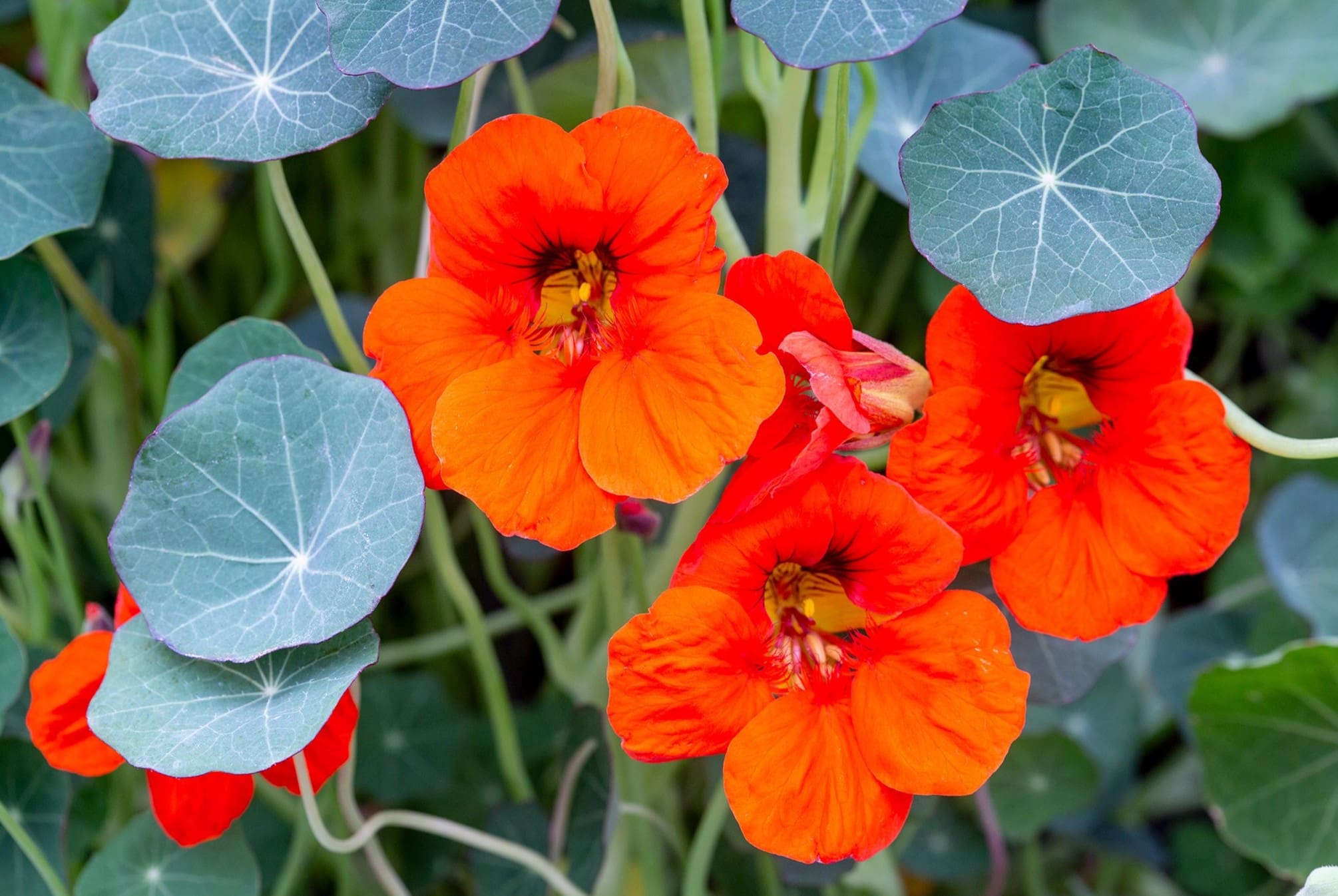
Nasturtiums are more than just pretty flowers; they pack a punch in both gardens and kitchens. Did you know nasturtiums are edible? Their peppery leaves and vibrant petals can spice up salads, sandwiches, and even desserts. These hardy plants thrive in poor soil, making them perfect for beginner gardeners. Plus, they act as natural pest repellents, protecting your veggies from unwanted bugs. Nasturtiums also attract beneficial insects like bees and butterflies, boosting pollination. With their bright colors and easy care, nasturtiums are a must-have for any garden. Ready to learn more? Dive into these 20 fascinating facts about nasturtiums!
Key Takeaways:
- Nasturtium is a versatile plant with edible flowers, medicinal uses, and natural pest-repellent properties. It's easy to grow and comes in various varieties, making it a great addition to any garden.
- Nasturtium offers more than just beauty; it has culinary uses like peppery leaves, pickled seeds, and floral vinegar. It also benefits the garden by improving soil, attracting pollinators, and serving as a companion plant.
What is Nasturtium?
Nasturtium, also known as Tropaeolum, is a vibrant and versatile plant. Loved by gardeners and chefs alike, it offers both beauty and utility. Let's dive into some fascinating facts about this unique plant.
-
Edible Flowers: Nasturtium flowers are not just pretty; they are edible. Their peppery taste adds a zing to salads and garnishes.
-
Medicinal Uses: Historically, nasturtium has been used for its medicinal properties. It contains compounds that can help fight infections and boost the immune system.
-
Easy to Grow: This plant is perfect for beginner gardeners. It thrives in poor soil and requires minimal care.
-
Natural Pest Repellent: Nasturtium acts as a natural pest repellent. Its strong scent deters aphids, whiteflies, and other garden pests.
Nasturtium Varieties
There are several varieties of nasturtium, each with unique characteristics. Here are some popular ones you might encounter.
-
Tropaeolum majus: This is the most common variety, known for its large, vibrant flowers and trailing habit.
-
Tropaeolum minus: A smaller variety, it has more compact growth and smaller flowers, making it ideal for containers.
-
Tropaeolum peregrinum: Also known as the Canary Creeper, this variety has delicate, fringed yellow flowers and a climbing habit.
-
Tropaeolum speciosum: Known as the Flame Flower, it features striking red flowers and is often used in ornamental gardens.
Culinary Uses
Nasturtium is not just a pretty face in the garden. Its culinary uses are diverse and delightful.
-
Peppery Leaves: The leaves have a peppery flavor similar to arugula. They can be used in salads, sandwiches, and pesto.
-
Pickled Seeds: Nasturtium seeds can be pickled and used as a substitute for capers.
-
Floral Vinegar: Infuse vinegar with nasturtium flowers to create a colorful and flavorful addition to dressings and marinades.
-
Herbal Butter: Mix chopped nasturtium leaves and flowers into softened butter for a unique, spicy spread.
Nasturtium in the Garden
Nasturtium is not only useful in the kitchen but also plays a significant role in the garden ecosystem.
-
Companion Planting: Plant nasturtium alongside vegetables like tomatoes, cucumbers, and beans to improve growth and deter pests.
-
Soil Improvement: Nasturtium can help improve soil quality. Its roots break up compacted soil, and its leaves add organic matter when they decompose.
-
Pollinator Attraction: The bright flowers attract pollinators like bees and butterflies, which can help increase the yield of nearby crops.
Fun Facts
Nasturtium has some quirky and interesting aspects that make it even more fascinating.
-
Name Origin: The name "nasturtium" comes from the Latin words "nasus" (nose) and "tortum" (twisted), referring to the plant's strong scent.
-
Historical Significance: Nasturtium was brought to Europe from South America in the 16th century and quickly became popular in gardens and kitchens.
-
Symbolism: In the language of flowers, nasturtium symbolizes patriotism and conquest.
-
Color Range: Nasturtium flowers come in a wide range of colors, including red, orange, yellow, and cream.
-
Annual or Perennial: Depending on the climate, nasturtium can be grown as an annual or a perennial. In warmer regions, it can survive year-round.
Nasturtiums: Nature's Colorful Gift
Nasturtiums aren't just pretty flowers; they're versatile, easy to grow, and packed with benefits. From their vibrant colors to their edible leaves and flowers, these plants bring joy and utility to any garden. They attract beneficial insects, repel pests, and even improve soil health. Plus, their peppery taste adds a unique twist to salads and dishes. Whether you're a seasoned gardener or a newbie, nasturtiums are a fantastic addition to your green space. They require minimal care, thrive in poor soil, and can grow in various climates. So, if you're looking to add a splash of color and a touch of practicality to your garden, nasturtiums are the way to go. Embrace the beauty and benefits of these wonderful plants, and watch your garden flourish.
Frequently Asked Questions
Was this page helpful?
Our commitment to delivering trustworthy and engaging content is at the heart of what we do. Each fact on our site is contributed by real users like you, bringing a wealth of diverse insights and information. To ensure the highest standards of accuracy and reliability, our dedicated editors meticulously review each submission. This process guarantees that the facts we share are not only fascinating but also credible. Trust in our commitment to quality and authenticity as you explore and learn with us.


